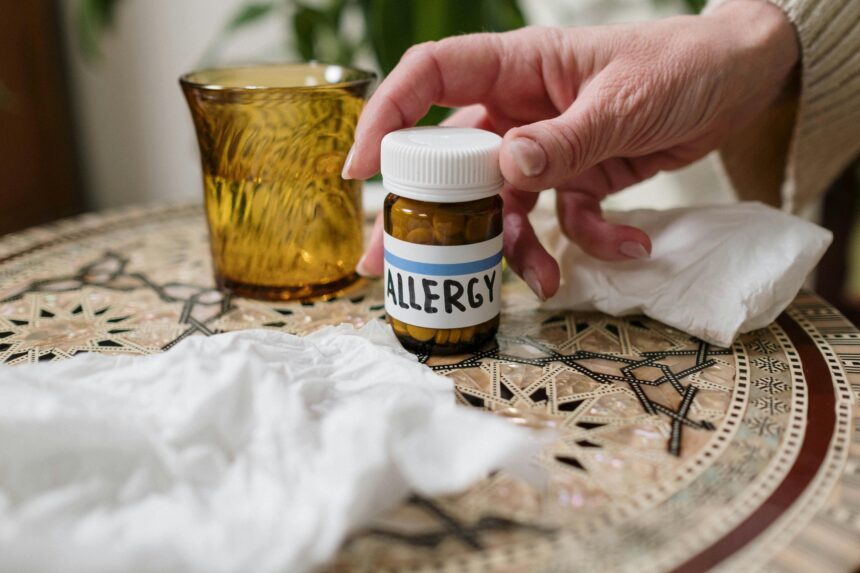Dealing with allergies can be a frustrating experience, affecting your daily life and well-being. If you’re new to allergy medications, you might be wondering about the best treatment options available. Enter Lorphenadine, a popular choice among allergy sufferers for its effectiveness. In this guide, we’ll explore everything you need to know about Lorphenadine, from its basics to practical tips for maximizing its benefits. Let’s get started!
Introduction
Lorphenadine is an over-the-counter antihistamine used to relieve allergy symptoms such as sneezing, runny nose, itchy eyes, and throat irritation. It works by blocking histamine, a substance your body produces during an allergic reaction. This medication is particularly effective for seasonal allergies, also known as hay fever, and can provide relief from indoor allergens like dust mites and pet dander.
Understanding how Lorphenadine fits into your allergy management plan is crucial. Whether you’re experiencing allergies for the first time or looking to switch medications, this guide aims to provide you with all the necessary information. We’ll cover the science behind Lorphenadine, safety tips, and much more to help you make an informed decision.
By the end of this blog post, you’ll have a comprehensive understanding of Lorphenadine, its benefits, and how to use it effectively. Let’s dive deeper into the science behind this popular allergy medication.
The Science Behind Lorphenadine’s Effectiveness for Allergies
Lorphenadine belongs to a class of drugs called antihistamines. When your body encounters an allergen, it releases histamines, which trigger allergy symptoms. Lorphenadine works by binding to histamine receptors, preventing these chemicals from causing symptoms. This action helps reduce sneezing, itching, and other discomforts associated with allergies.
Studies have shown that Lorphenadine is effective in alleviating both seasonal and perennial allergic rhinitis. Unlike older antihistamines, Lorphenadine is less likely to cause drowsiness, making it a preferable option for those who need to remain alert throughout the day. This advantage stems from Lorphenadine’s ability to selectively target peripheral histamine receptors without crossing the blood-brain barrier.
Understanding the science behind Lorphenadine can enhance your confidence in using this medication. It offers a reliable solution for managing allergies without the sedation commonly associated with other antihistamines. Let’s move on to how you can use Lorphenadine safely to maximize its benefits.
A Detailed Guide on How to Use Lorphenadine Safely
Using it correctly is essential to achieving optimal relief from allergy symptoms. Start by reading the medication label and following any instructions provided by your healthcare provider. Typically, It is taken once daily, with or without food. It’s available in various forms, including tablets, liquid, and disintegrating tablets.
Dosage varies based on age and medical condition. For adults and children over 12, 10 mg once daily is the standard dosage. Children aged 6 to 12 may require a lower dose. Consult your healthcare provider to determine the right dosage for you or your child. Avoid exceeding the recommended dose, as this won’t enhance its effectiveness and could lead to unwanted side effects.
If you miss a dose, take it as soon as you remember. However, if it’s close to the time for the next dose, skip the missed dose and resume your regular schedule. Never double up on doses. Understanding these guidelines ensures you use Lorphenadine safely and effectively. Next, we’ll explore common side effects and how to manage them.
Common Side Effects and How to Manage Them
While Lorphenadine is generally well-tolerated, some users may experience side effects. The most common ones include headache, dry mouth, and mild drowsiness. These symptoms are usually temporary and diminish as your body adjusts to the medication. Drinking plenty of water and staying hydrated can help alleviate dry mouth.
In rare cases, Lorphenadine can cause more serious side effects such as rapid heartbeat, severe dizziness, or difficulty breathing. If you experience any of these symptoms, seek medical attention immediately. It’s also important to inform your healthcare provider about any other medications you’re taking, as certain drugs can interact with Lorphenadine.
Managing side effects involves being aware of potential reactions and taking steps to minimize them. By staying informed and consulting your healthcare provider, you can use Lorphenadine with confidence. Let’s move on to tips for maximizing its allergy relief capabilities.
Tips for Maximizing Lorphenadine’s Allergy Relief
To get the most out of Lorphenadine, consider adopting a few strategies that can enhance its effectiveness. First, take the medication at the same time every day to maintain consistent levels in your system. This routine helps keep allergy symptoms at bay throughout the day.
Combining Lorphenadine with other allergy management techniques can also be beneficial. For example, using a saline nasal spray can help clear allergens from your nasal passages, providing additional relief. Additionally, keeping windows closed during high pollen seasons and using air purifiers indoors can reduce exposure to allergens.
Finally, maintain a healthy lifestyle by eating a balanced diet, staying hydrated, and getting regular exercise. These habits can boost your immune system and overall well-being, making it easier for your body to cope with allergens. With these tips, you can maximize Lorphenadine’s benefits and enjoy a more comfortable allergy season. Now, let’s compare Lorphenadine with other allergy medications.
Comparing Lorphenadine with Other Allergy Medications
When choosing an allergy medication, it’s helpful to understand how Lorphenadine stacks up against other options. Antihistamines like cetirizine and fexofenadine are similar to Lorphenadine in their ability to relieve allergy symptoms. However, each medication has its unique features and potential side effects.
Cetirizine, for example, is effective but may cause drowsiness in some users. Fexofenadine is another non-drowsy option but can be more expensive. Lorphenadine strikes a balance by providing effective relief with minimal sedation at a reasonable cost. It’s a versatile choice for many allergy sufferers.
In addition to antihistamines, nasal corticosteroids like fluticasone can be used to manage allergy symptoms. These nasal sprays reduce inflammation in the nasal passages but may take a few days to achieve full effect. Combining it with a nasal corticosteroid can provide comprehensive relief for those with severe allergies.
By comparing these options, you can make an informed decision about which medication best suits your needs. Let’s address some frequently asked questions about Lorphenadine.
Frequently Asked Questions about Lorphenadine
What is Lorphenadine used for?
Lorphenadine is used to relieve symptoms of allergic rhinitis, such as sneezing, runny nose, and itchy eyes. It can also help with skin hives and itching in some cases.
Is Lorphenadine safe for children?
Yes, It is safe for children aged 6 and older when used as directed. Always consult a healthcare provider for the appropriate dosage based on the child’s age and weight.
Can I take Lorphenadine with other medications?
It’s important to inform your healthcare provider about all medications you’re taking, as certain drugs can interact with Lorphenadine. Avoid combining it with other antihistamines unless advised by a healthcare professional.
How quickly does Lorphenadine work?
It typically starts working within one hour of ingestion, providing relief from allergy symptoms for up to 24 hours.
Are there any long-term side effects of using Lorphenadine?
Long-term use of Lorphenadine is generally considered safe when used as directed. However, always follow your healthcare provider’s guidance and report any unusual symptoms.
These FAQs cover some common concerns about Lorphenadine. If you have other questions, don’t hesitate to reach out to your healthcare provider. Let’s wrap up with a conclusion that empowers you with the knowledge to manage your allergies effectively.
Conclusion
Lorphenadine is a powerful ally in the battle against allergies. By understanding its benefits, how to use it safely, and tips for maximizing its effectiveness, you can confidently manage your allergy symptoms. Whether you’re dealing with seasonal allergies or year-round irritants, Lorphenadine offers a reliable solution.
Remember, staying informed and proactive is key to successful allergy management. Don’t hesitate to consult your healthcare provider for personalized advice and support. With the right approach, you can enjoy a more comfortable and allergy-free life.




